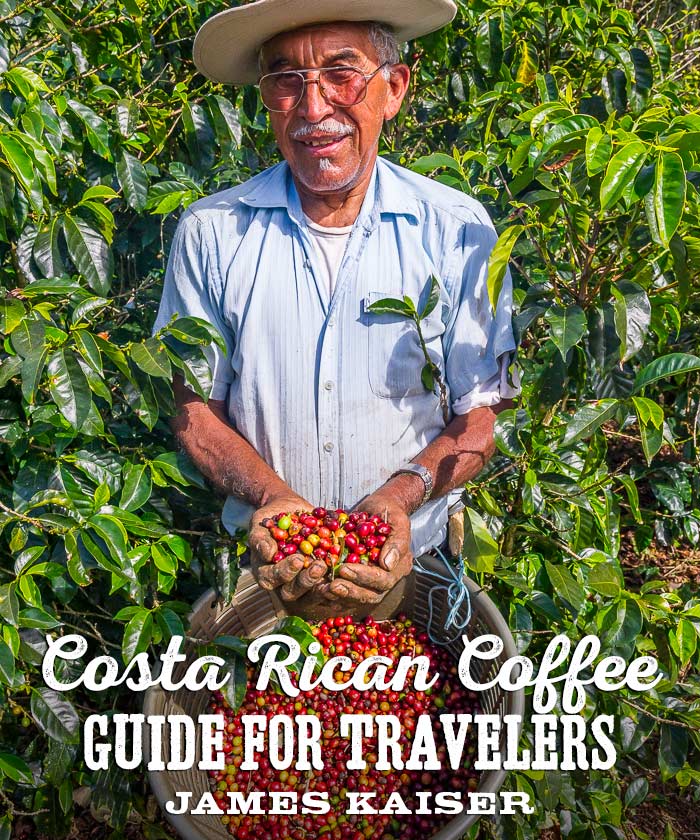
It’s impossible to talk about Costa Rica without talking about coffee.
Costa Rica’s tropical climate, tall mountains and rich volcanic soil combine to create one of the most extraordinary coffee growing regions on earth.
Costa Rican coffee farmers only grow arabica beans. Connoisseurs value these high-quality beans for their soft taste, complex flavor profile and bright acidity.
The story of Costa Rican coffee — it’s history, influence, and current production — is one of the most fascinating aspects of this already fascinating country.
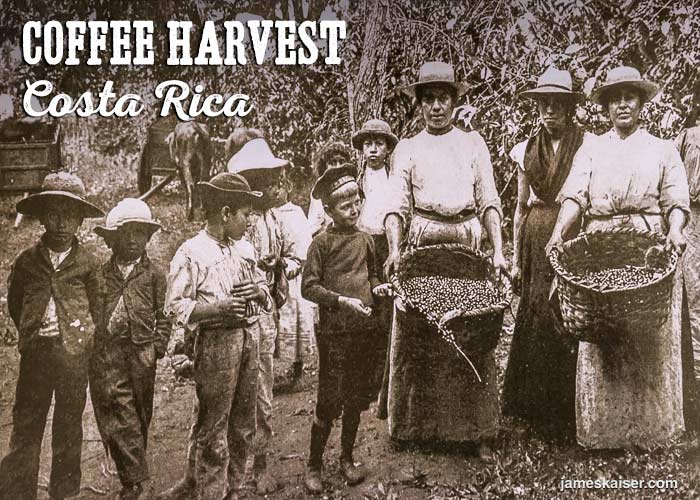
History
“The golden bean,” as Costa Ricans call it, is inseparable from Costa Rica’s history and development.
The cultivation of coffee in the early 1800s transformed Costa Rica from a poor, remote backwater to an export powerhouse, giving rise to both a stable middle class and a wealthy coffee oligarchy. (I chronicle this fascinating story in my book Costa Rica: The Complete Guide)
By the 1850s coffee accounted for over 90% of Costa Rican exports. As a result, the majority of Costa Ricans lived in the mountains where coffee grows best.
Coffee remained a top export through much of the 20th century. Today there are over 93,000 hectares (348 square miles) under cultivation.
Because a small country like Costa Rica can’t compete on quantity, coffee farmers compete on quality, growing only choice arabica beans.
Farmers cultivate coffee between 600–1,700 meters (2,000–5,600 feet). The finest coffee, however, is grown at cool, high elevations above 1,200 meters (3,900 feet).
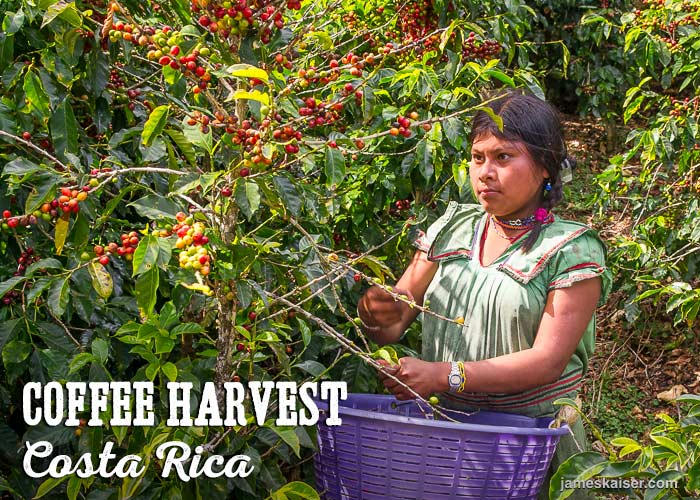
When is Costa Rica’s coffee harvest?
Costa Rica’s major coffee harvest takes place from December to March. During this time plantations are filled with workers picking ripe coffee berries by hand.
Costa Rica’s school vacation, mid-December to early February, coincides with peak coffee harvest so children can help their parents in the field.
These days, however, fewer and fewer Costa Ricans pick coffee. About half of the country’s coffee pickers are poor migrant workers from Nicaragua and Panama. Pickers start the harvest at low elevation plantations and follow ripening berries to progressively higher elevations.
Coffee pickers in Costa Rica gather their harvest in a cajuela. Traditional cajuelas were woven baskets, but plastic buckets are more common today. When filled with ripe coffee berries, a cajuela weighs 12.9 kg (28 pounds). Each year coffee pickers fill roughly 42 million cajuelas in Costa Rica.
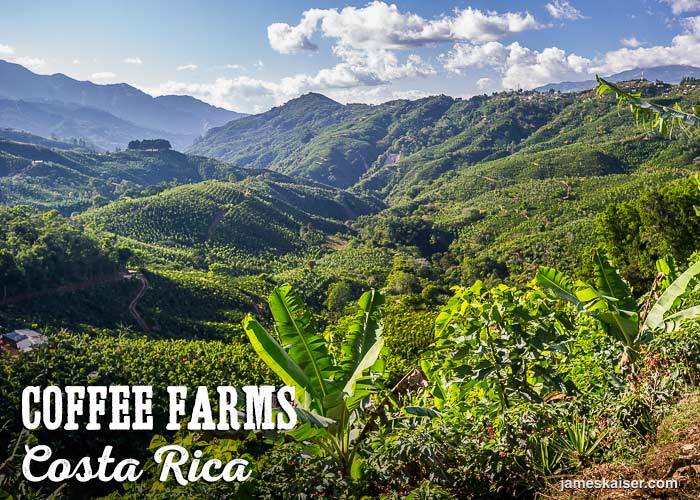
Coffee Tours
Two of the main pillars of Costa Rica’s economy are coffee and tourism. Why coffee tourism isn’t more popular is a mystery to me.
Most gringos, it seems, just want to go to the beach. So most Costa Rican entrepreneurs, eager to please, focus their investments on beach tourism.
This leaves a stunning, under-explored coffee wonderland hidden in the mountains!
Costa Rica’s high elevation coffee growing regions are gorgeous. They’re home to beautiful landscapes, authentic villages and — of course — some of the world’s best coffee.
Fortunately, there are a handful of wonderful coffee plantation tours in Costa Rica. Unfortunately, there are also some real stinkers. To help you plan the best possible vacation, I list the best coffee tours in Costa Rica: The Complete Guide
A good tour walks you through the entire process, from harvest to processing to tasting.
Here’s a sample of what you’ll see:
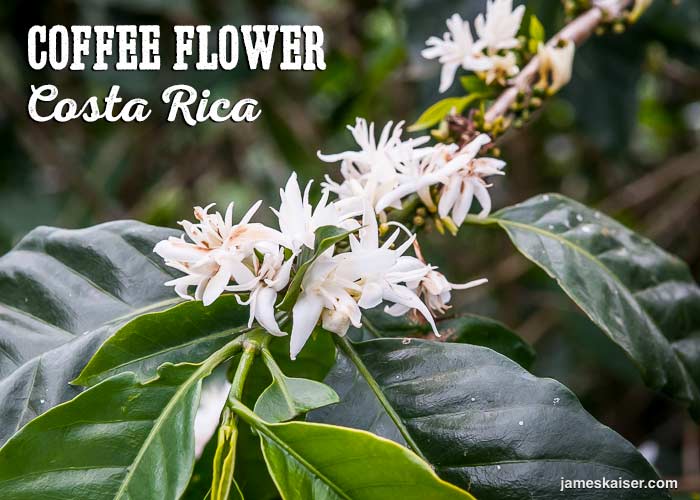
Beautiful white flowers cover coffee plants before berries form.
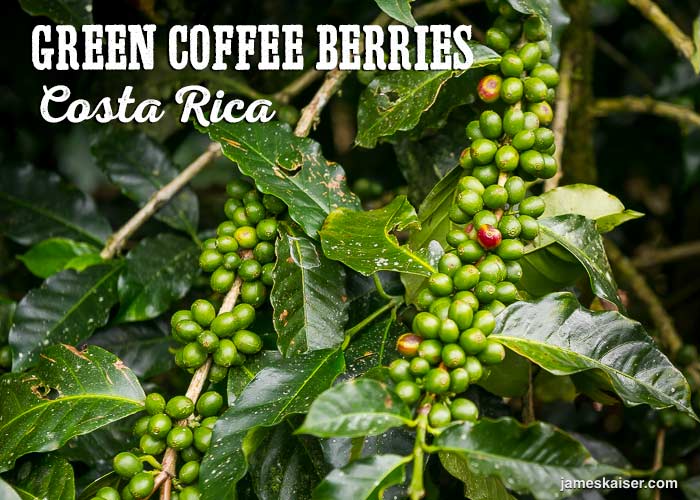
Green coffee berries.
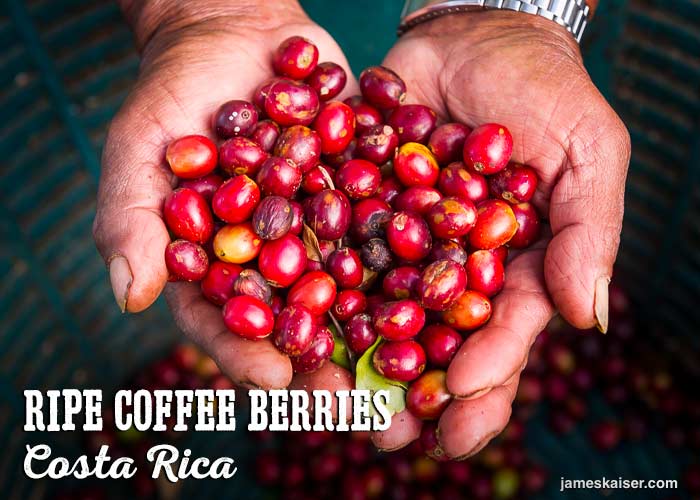
When berries are red and ripe, workers harvest them by hand.
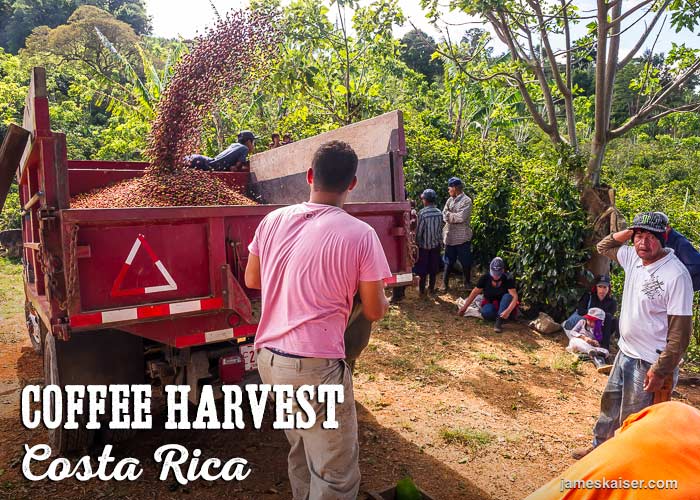
Workers load ripe coffee berries onto a truck.
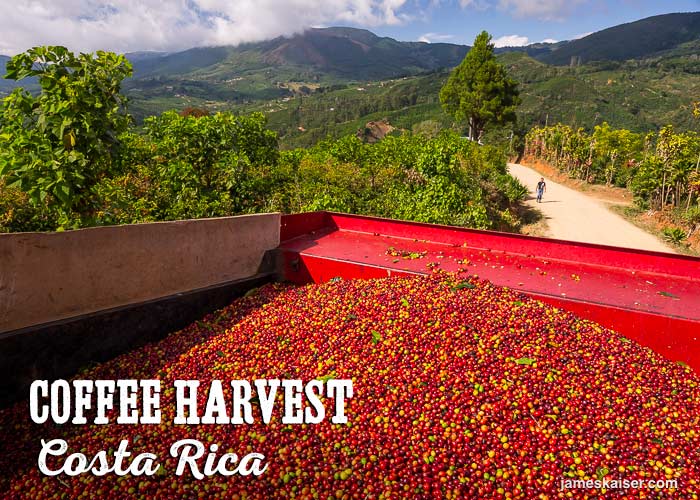
The coffee truck twists and turns through the mountains to the processing facility.

Unloading ripe coffee berries at a local processing facility.
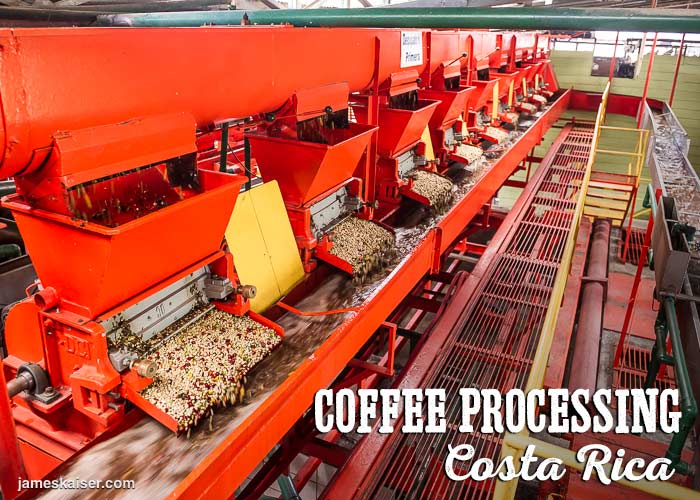
A machine separates the fleshy fruit from the hard coffee bean.
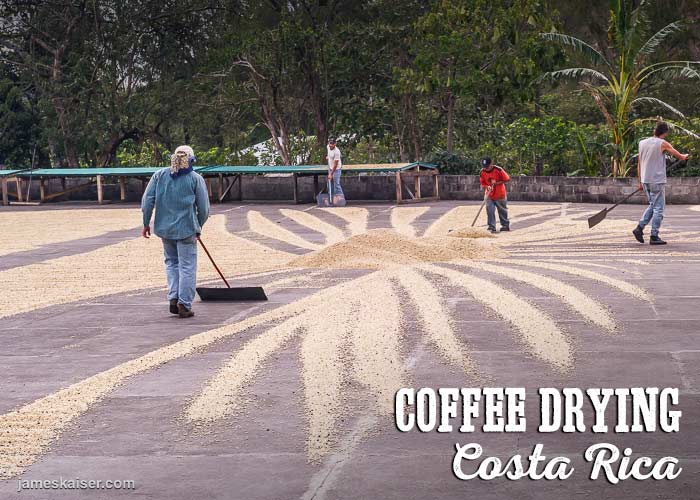
Workers spread green coffee beans to dry naturally under the sun.
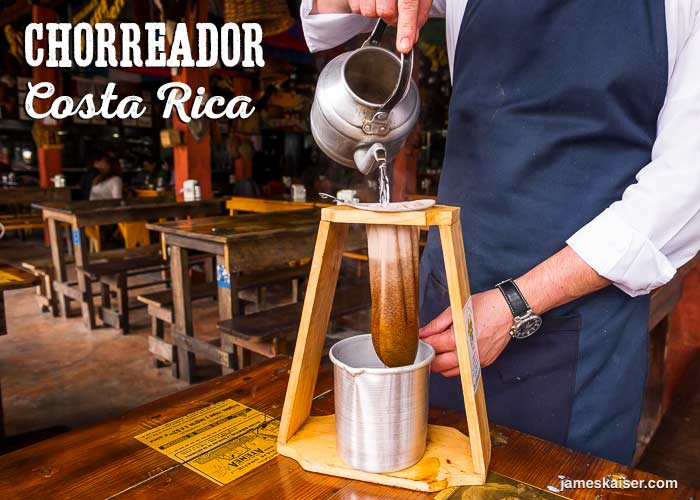
Making a perfect cup of coffee with a chorreador. These traditional Costa Rican coffee makers consist of a tall wooden stand with a cotton bolsa (“bag”). Hot water is poured over grounds in the bolsa, and delicious gourmet coffee results!